Hydrocarbons Questions:
Ques. Naphthalene is a/an
(a) Ionic solid
(b) Covalent solid
(c) Metallic solid
(d) Molecular solid
Ques. Which of the following is not aromatic?
(a) Benzene
(b) Naphthalene
(c) Pyridine
(d) 1,3,5 heptatriene
Ques. Compound C6H12 is an
(a) Aliphatic saturated compound
(b) Alicyclic compound
(c) Aromatic compound
(d) Heterocyclic compound
Ques. Acetylene reacts with HCN in the presence of Ba(CN)2 to yield
(a) 1, 1-dicyanoethane
(b) 1, 2-dicyanoethane
(c) Vinyl cyanide
(d) None of these
Related: Connective tissue test questions
Ques. In benzene 1, 3 position is called
(a) Meta
(b) Para
(c) Ortho
(d) Odd position
Ques. In the case homologous series of alkanes, which one of the following statements is incorrect
(a) The members of the series are isomers of each other
(b) The members of the series have similar chemical properties
(c) The members of the series have the general formula
(d) The difference between any two successive members of the series corresponds to 14 unit of relative atomic mass
Ques. Which of the following is formed as a result of biological oxidation of benzene in the body of the dog
(a) Acrylic acid
(b) Cinnamic acid
(c) Maleic acid
(d) Gluconic acid
Ques. Nitrobenzene can be prepared from benzene by using a mixture of conc. HNO3 and conc. H2SO4. In the nitrating mixture, HNO3 acts as a
(a) Base
(b) Acid
(c) Reducing agent
(d) Catalyst
Related: Glycolysis questions
Ques. The shape of methane molecule is
(a) Linear
(b) Trigonal planar
(c) Square planar
(d) Tetrahedral
Ques. Iodoethane reacts with sodium in the presence of dry ether. The product is
(a) Pentane
(b) Propane
(c) Butene
(d) Butane
Ques. Halogenation of alkanes is an example of
(a) Electrophilic substitution
(b) Nucleophilic substitution
(c) Free-radical substitution
(d) Oxidation
Ques. Which of the following is not a member of homologous series?
(a) Ethene
(b) 1-butene
(c) 2-butene
(d) 2-butyne
Ques. The bond length between the hybridised carbon atom and other carbon atom is minimum in
(a) Butane
(b) Propyne
(c) Propene
(d) Propane
Related: carboxylic acid questions and answers
Ques. Acetylene can be prepared from
(a) Potassium fumarate
(b) Calcium carbide
(c) Ethylene bromide
(d) All of these
Ques. The shapes of methane, ethene and ethyne molecules are, respectively
(a) Tetrahedral, planar and linear
(b) Tetrahedral, linear and planar
(c) Pyramidal, planar and linear
(d) Tetrahedral, pyramidal and planar
Ques. Chloroprene is used in making
(a) Synthetic rubber
(b) Plastic
(c) Petrol
(d) All of these
Ques. Electrophilic addition on a carbon-carbon double bond involves the intermediate formation of a more stable carbocation. This statement is called
(a) Saytzeff’s rule
(b) Baeyer’s effect
(c) Markownikoff’s rule
(d) None of these
Ques. Ozonolysis of 2-methyl butene-2 yields
(a) Only aldehyde
(b) Only ketone
(c) Both aldehyde and ketone
(d) None of these
Related: mcq on AC Circuits
Ques. In the presence of peroxide, hydrogen chloride and hydrogen iodide do not give anti-Markovnikoff’s addition to alkenes because
(a) Both are highly ionic
(b) One is oxidising and the other is reducing
(c) One of the steps is endothermic in both the cases
(d) All the steps are exothermic in both the cases
Ques. The compound having both sp and sp2 hybridised carbon atom is
(a) Propene
(b) Propyne
(c) Propadiene
(d) None of these
Ques. When alcoholic solution of ethylene dibromide is heated with granulated zinc, the compound formed is
(a) Ethylene
(b) Ethyne
(c) Cyclobutane
(d) Butane
Ques. A hydrocarbon reacts with hypochlorous acid to give 1-chloro-2-hydroxyethane. The hydrocarbon is
(a) Ethylene
(b) Methane
(c) Ethane
(d) Acetylene
Ques. Cyclopentene on treatment with alkaline KMnO4 gives
(a) Cyclopentanol
(b) trans 1, 2-cyclopentanediol
(c) cis 1, 2-cyclopentanediol
(d) 1 : 1 mixture of cis and trans 1, 2-cyclopentanediol
Related: Acceleration due to gravity MCQ
Ques. Which process converts olefins into parafins?
(a) Dehydration
(b) Halogenation
(c) Hydrolysis
(d) Hydrogenation
Ques. Isopropyl alcohol is obtained by reacting which of the following alkenes with conc. H2SO4 and H2O
(a) Ethylene
(b) Propylene
(c) 2-methyl propene
(d) Isoprene
Ques. Photochemical chlorination of alkane is initiated by a process of
(a) Pyrolysis
(b) Homolysis
(c) Peroxidation
(d) Substitution
Ques. Sodium ethoxide is a specific reagent for
(a) Dehydration
(b) Dehydrogenation
(c) Dehydrohalogenation
(d) Dehalogenation
Ques. The most strained cycloalkane is
(a) Cyclopropane
(b) Cyclobutane
(c) Cyclopentane
(d) Cyclohexane
Related: capillarity in physics quiz
Ques. When toluene is treated with KMnO4, what is produced
(a) Benzene
(b) Chlorobenzene
(c) Benzaldehyde
(d) Benzoic acid
Ques. Benzene molecule is
(a) Tetrahedral
(b) Planar
(c) Pyramidal
(d) Trigonal
Ques. Nitration of benzene is a
(a) Electrophilic displacement
(b) Electrophilic addition
(c) Nucleophilic addition
(d) Nucleophilic displacement
Ques. In acetylene molecule, the two carbon atoms are linked by
(a) One sigma bond and two pi bonds
(b) Two sigma bonds and one pi bond
(c) Three sigma bonds
(d) Three pi bonds
Ques. Aqueous sulphuric acid reacts with 2-methyl-1-butene to give predominantly
(a) Isobutyl hydrogen sulphate
(b) 2-methyl-2-butanol
(c) 2-methyl-1-butanol
(d) Secondary butyl hydrogen sulphate
Ques. When 3, 3-dimethyl-2-butanol is heated with H2SO4 the major product obtained is
(a) cis and trans isomers of 2, 3-dimethyl-2-butene
(b) 3, 3-dimethyl-1-butene
(c) 2, 3-dimethyl-2-butene
(d) 2, 3-dimethyl-1-butene
Related: online test on Algae
Ques. Coaltar is main source of
(a) Aromatic compounds
(b) Aliphatic compounds
(c) Cycloalkanes
(d) Heterocyclic compounds
Ques. Chemical name of the insecticide gammexene is
(a) DDT
(b) Benzene hexachloride
(c) Chloral
(d) Hexachloroethane
Ques. A liquid hydrocarbon can be converted to gaseous hydrocarbon by
(a) Cracking
(b) Hydrolysis
(c) Oxidation
(d) Distillation under reduced pressure
Ques. As the number of carbon atoms in a chain increases the boiling point of alkanes
(a) Increases
(b) Decreases
(c) Remains same
(d) May increase or decrease
Related: binomial theorem problems with solutions
Ques. Cyclohexane, a hydrocarbon floats on water because
(a) It is immiscible with water
(b) Its density is low as compared to water
(c) It is non-polar substance
(d) It is immiscible and lighter than water
Ques. When acetylene is reacted with HBr, we get
(a) Methyl bromide
(b) Ethyl bromide
(c) Ethylene bromide
(d) Ethylidene bromide
Ques. The number of secondary hydrogens in 2, 2-dimethyl butane is
(a) 8
(b) 6
(c) 4
(d) 2
Ques. The octane number of a sample of petrol is 40. It means that its knocking property is equal to the mixture of
(a) 40% n-heptane + 60% iso-octane
(b) 40% petrol + 60% iso-octane
(c) 60% n-heptane + 40% iso-octane
(d) 60% petrol + 40% iso-octane
Ques. Formation of 2-butene as major product by dehydration of 2-butanol is according to
(a) Markownikoff rule
(b) Saytzeff rule
(c) Peroxide effect
(d) Anti-Markownikoff rule
Related: Diversity of Life Multiple Choice Questions
Ques. Which kind of isomerism will butene-2 show
(a) Geometrical
(b) Optical
(c) Position
(d) None of these
Ques. Which of the following has highest octane number?
(a) n-hexane
(b) n-heptane
(c) n-pentane
(d) 2, 2, 4-trimethyl pentane
Ques. In presence of light toluene on reaction with chlorine gives
(a) Benzoyl chloride
(b) Ortho chlorotoluene
(c) Para chloro toluene
(d) Benzyl chloride
Ques. What is freon-12?
(a) Pesticide
(b) Refrigerant
(c) Solvent
(d) Lubricant
Ques. Which one of the following reactions is most suitable for the preparation of n-propyl benzene?
(a) Friedel-Craft’s reaction
(b) Wurtz reaction
(c) Wurtz-Fittig reaction
(d) Grignard reaction
Ques. The petrol having octane number 80 has
(a) 20% normal heptane + 80% iso-octane
(b) 80% normal heptane + 20% iso-octane
(c) 20% normal heptane + 80% normal octane
(d) 80% normal heptane + 20% normal octane

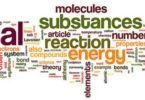
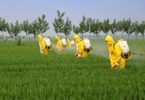
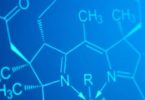
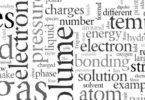
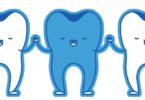
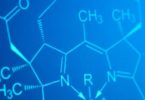
It’s hard to say
thanks
where I can found other topics on chemistry